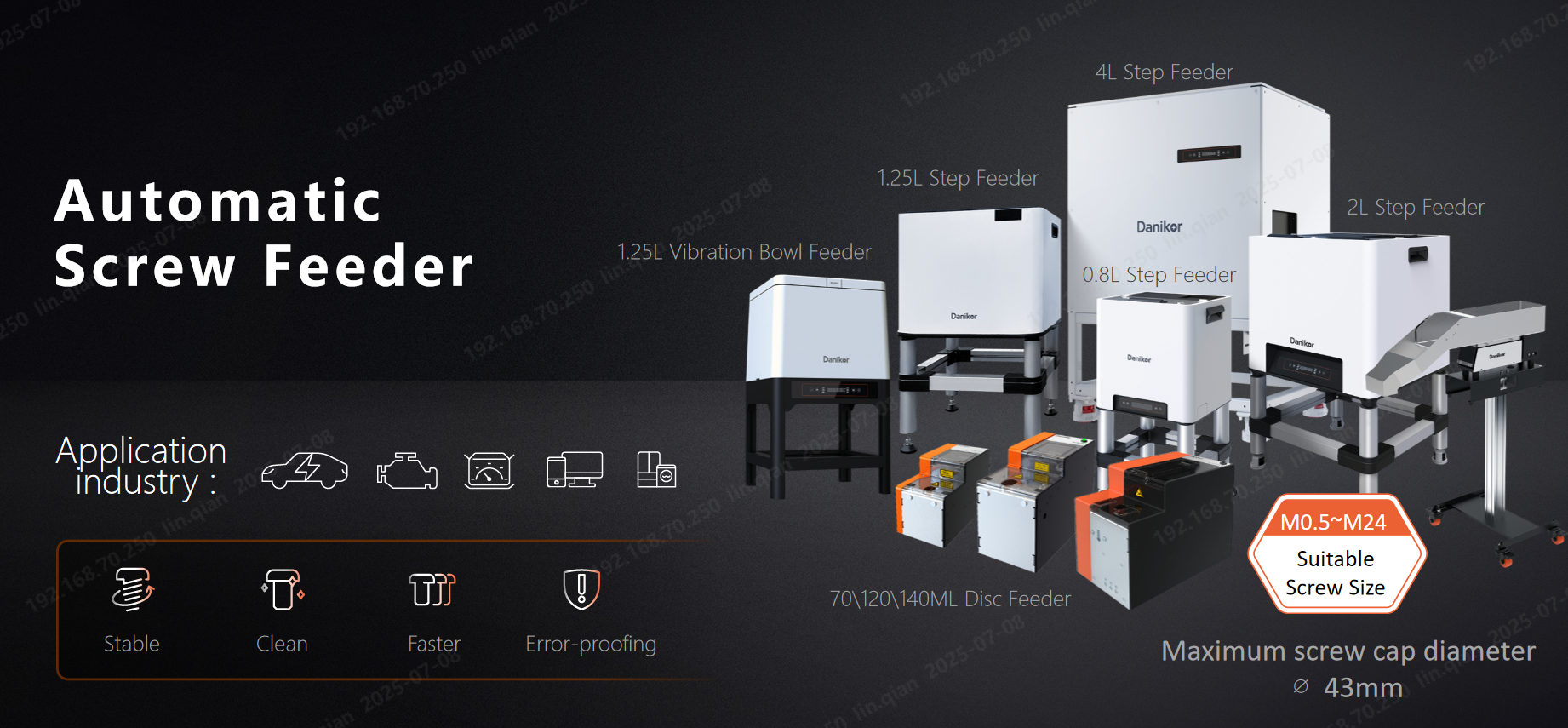How to select the right screw feeder based on the production characteristics of different industries?
As a core device for screw conveying and positioning in industrial automation assembly systems, the rationality of screw feeding machine selection directly determines the production line's takt efficiency, product yield, and operational costs. Ignoring industry-specific characteristics and blindly selecting equipment can lead to minor issues like screw jamming and downtime, or major problems affecting product quality stability. This article will analyze the selection logic for different industries—3C, home appliances, medical, and automotive—based on their unique needs.

1. 3C Industry: Precision Assembly of Micro Screws
Screw specifications in 3C products (such as mobile phones and computers) mainly range from M0.5 to M2. Some special structural screws (e.g., super screws, step screws) are particularly difficult to feed automatically. Traditional feeding equipment is prone to jamming. However, turntable-type screw feeding machines can achieve zero-jam feeding through three structural innovations:
Patented Feeding Structure: Uses a waterwheel-type conveyor + V-shaped rail guidance. Screws are naturally sorted by gravity, avoiding squeezing and jamming.
Vacuum Adsorption Sorting: Screws are adsorbed by vacuum onto turntable holes and transmitted stably via negative pressure, eliminating mechanical friction-related jamming.
Strong Compatibility: Can stably feed screws with a head-to-shaft ratio ≤1 (large-head screws) and length-to-diameter ratio ≥1 (slender screws), covering over 95% of screw types used in the 3C industry.
2. Home Appliance Industry: Batch Production with Self-Tapping Screws
Home appliance assembly (air conditioners, refrigerators, washing machines, etc.) mainly uses self-tapping screws ranging from M2 to M6. Production lines require high speed, low noise, and stable feeding. Vibratory bowl-type screw feeding machines are ideal for these needs:
High Speed: Spiral vibration sorting technology enables a feeding rate of 40pcs/min, synchronized with the home appliance assembly line.
Low Noise: A specially engineered one-piece polymer bowl reduces friction between screws and the bowl, keeping noise below 72dB and improving the workshop environment.
Stable Feeding: The jamming rate for standard screws is less than 0.02%, and for screws with spring or flat washers, it’s less than 0.05%, ensuring continuous line operation.
3. Medical Industry: Clean Assembly
Medical device assembly (surgical instruments, monitors, etc.) has extremely strict requirements for environmental and material cleanliness. Push-plate (step-type) screw feeding machines, combined with multiple cleaning modules, can achieve dust-free screw feeding:
Bowl Cleaning: Mechanical push-plate feeding replaces vibration sorting, eliminating vibration sources that generate debris. The bowl is perforated and equipped with a vacuum module to absorb residual dust and debris, achieving preliminary screw cleaning.
Track Cleaning: Cleaning modules can be added on both sides of the feeding track to blow off most debris and dust from the screw surface.
Cleaning Module: A built-in high-negative-pressure vacuum system deeply adsorbs tiny contaminants on the screw surface, removing residual dust from thread grooves that cannot be eliminated by air blowing.
4. Automotive Industry: Stable Assembly of Large Screws
Large screws ranging from M3 to M24 are widely used in automotive body-in-white and electric systems. Some combination screws with spring or flat washers are difficult to feed and prone to jamming. Push-plate (step-type) screw feeding machines, with their wide adaptability and high stability, have become key equipment in intelligent automotive manufacturing:
Full Size Coverage: Can adapt to screws from M2 to M24, covering over 90% of screw assembly scenarios in the automotive industry.
Ultra-Low Failure Rate: Through optimized track structure, the jamming rate for standard screws is as low as 50PPM, and for screws with spring or flat washers, it’s within 200PPM, meeting high-speed automotive line requirements.
Functional Expansion: Modular design allows for optional add-ons such as length detection, cleaning modules, and screw diverters, providing high flexibility to meet diverse assembly needs.
Conclusion
Screw feeding machine selection is not about choosing the most advanced technology, but rather the one that best matches industry needs.
The 3C industry uses turntable-type machines to solve micro-screw assembly challenges.
The home appliance industry relies on vibratory bowl-type machines to match line speed.
The medical and automotive industries use push-plate-type machines to meet the respective needs of cleanliness/safety and large-size stable feeding.
Ultimately, it’s all about balancing efficiency, quality, and cost in industrial assembly.











